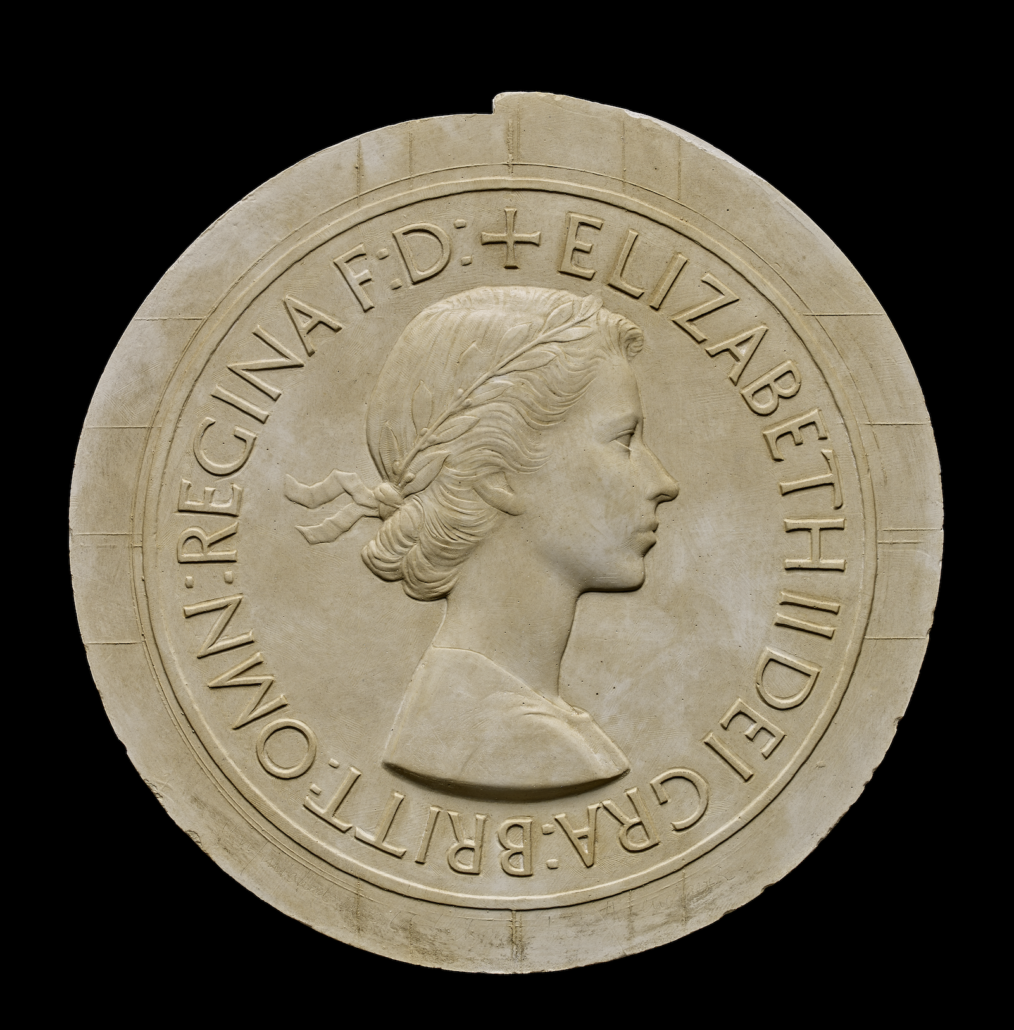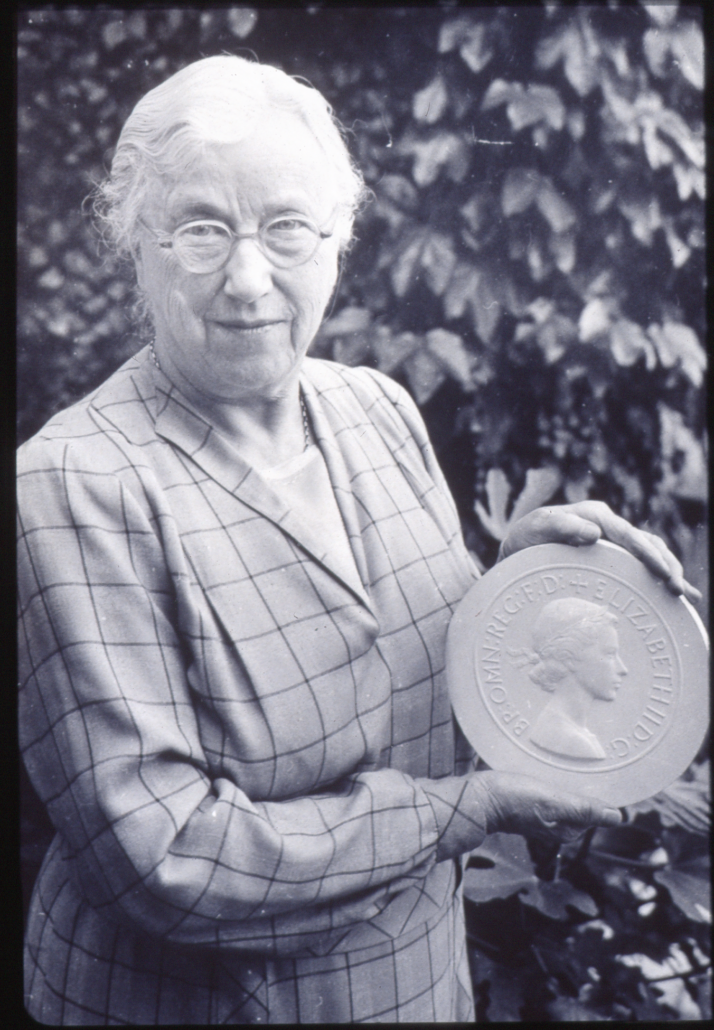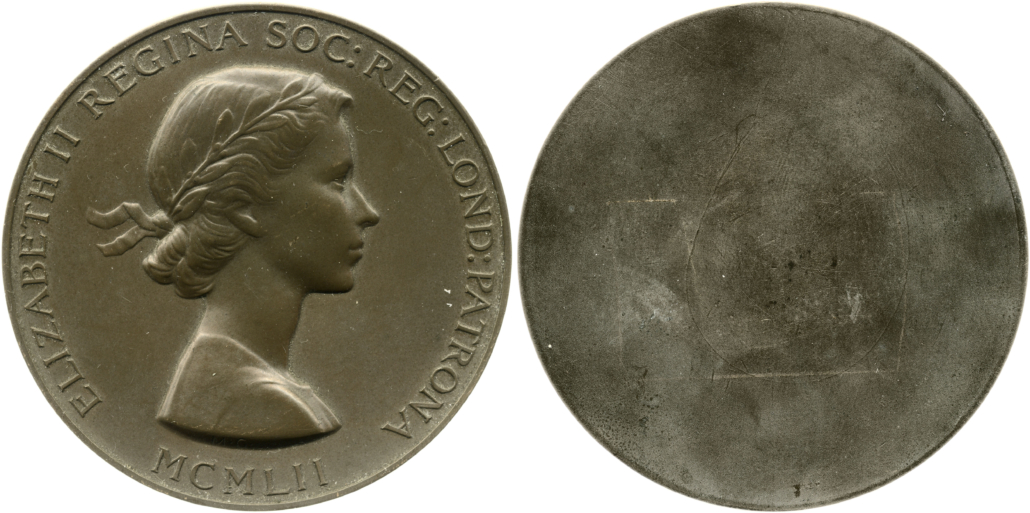
LONDON – In celebration of Queen Elizabeth II’s Platinum Jubilee in June, the British Museum will open a new, free display centering around artist Mary Gillick’s (1881-1965) portrait of the British royal. This portrait was for the first ever coin featuring the queen, designed 70 years ago in 1952 and issued in 1953. Mary Gillick: modelling The Queen’s portrait opens on June 2 and continues to July 31. It will showcase the production and reception of the coin, shining a light on the excitement around the young queen’s first depiction on British currency.
Gillick’s portrait of the queen combined modern design with Italian Renaissance influences, building on her experience as a medal maker. A woman artist bringing a modern style to traditional coinage was hailed by many as a fitting start to the queen’s reign. Her iconic design remained in circulation on coins in the UK until the 1990s. In addition, the design has been adapted for use on British commemorative stamps since 1966 and still appears on the Maundy money given out by the queen each Easter, indicating its continued importance.
Philip Attwood, curator of the display, said: “The Platinum Jubilee presents the British Museum with a marvelous opportunity to celebrate the life and work of Mary Gillick, a sculptor whose name may not be known to many nowadays, but whose major work, the coin portrait of Queen Elizabeth II, filled the pockets and purses of the nation for decades. Revolutionary in its day due to the debt it owes to Renaissance medals, the design is today regarded as a classic.”

Selected to design the coin from a cohort of invited artists, the identity of Gillick as the artist remained a secret for months. When details of the design were finally announced, the choice of a woman artist in her seventies garnered great interest from the press and public. Gillick was thrust into the limelight, with photos of her posing with her design printed in newspapers across the nation and abroad. Despite this initial interest and her long career as a sculptor, Gillick remains a much-neglected artist. As well as commemorating the queen, this exhibition will recognize Gillick’s significant contributions to sculpture and medal design, exploring her life and work.
Gillick was admired by prominent figures in the art world, such as Sir Kenneth Clark. She trained at the Royal College of Art, where she discovered Renaissance medals. A medal by the celebrated so-called “inventor” of the medal, the 15th-century Italian painter Pisanello, will be displayed alongside her work. Gillick was inspired by what is often termed the golden age of medal design, modernizing Pisanello’s style to suit 20th-century Britain. Other significant commissions such as a portrait of prominent suffragette Ida Wylie, commissioned by Wylie’s lover Rachel Barrett, and depictions of an airman who shot down a Zeppelin over England during the First World War will also be on view along with preparatory drawings.

A highlight of the display will be items presented to the British Museum by the artist’s family in 2005, which included medals created by Gillick from the 1910s to the 1950s, a set of large-scale plaster models of her portrait of the queen, and documents relating to the new coins. Drawings and photographs loaned from the Henry Moore Institute will demonstrate the creative process in full.
Visit the website of the British Museum and see its dedicated page for Mary Gillick: modelling The Queen’s portrait.


